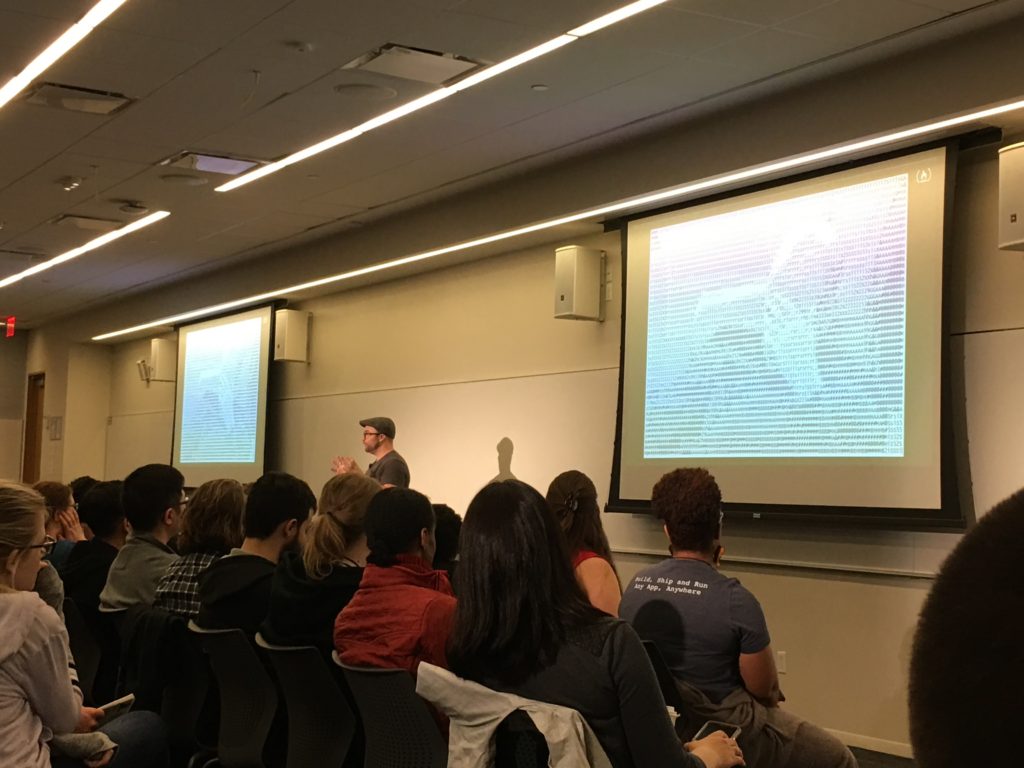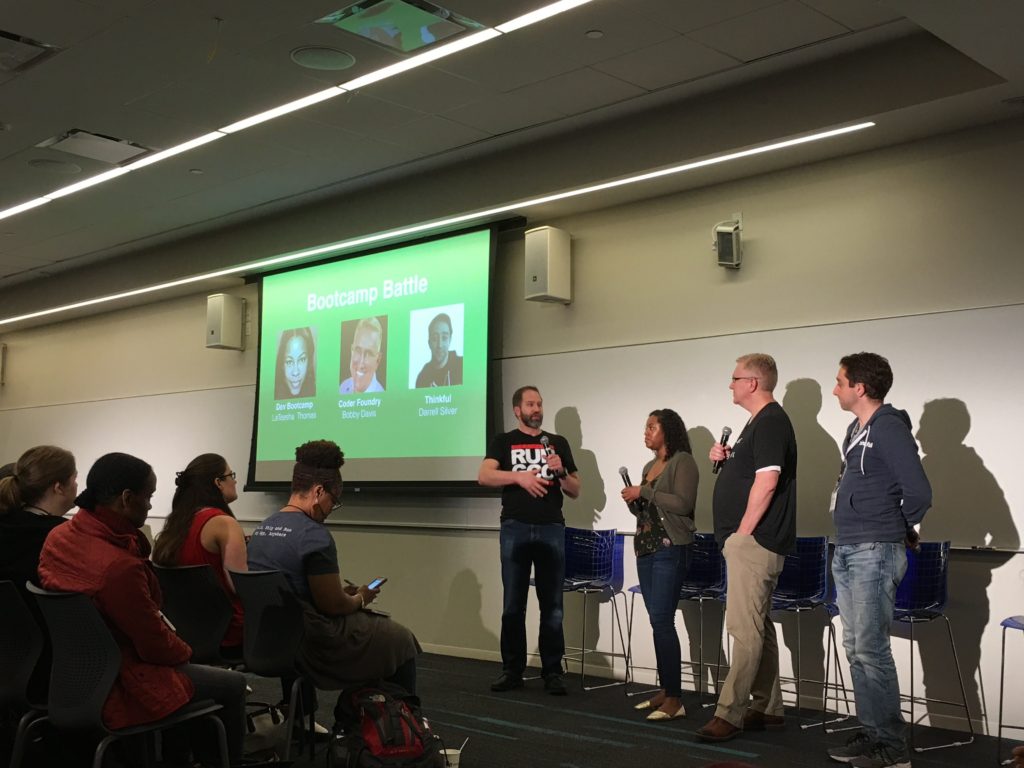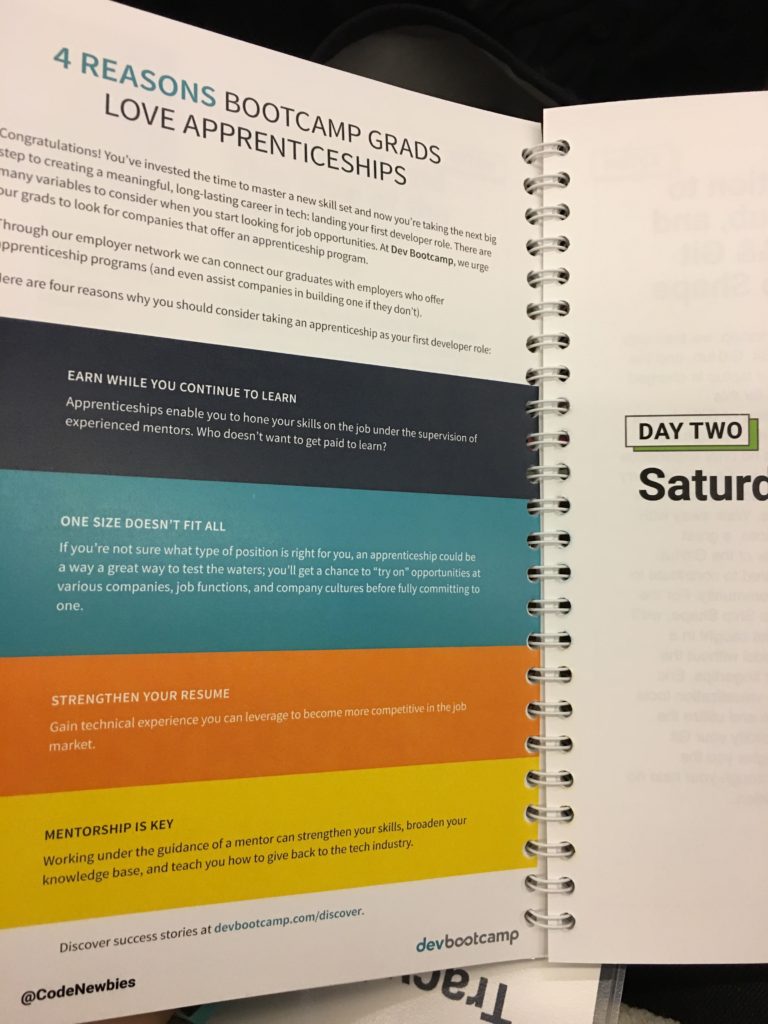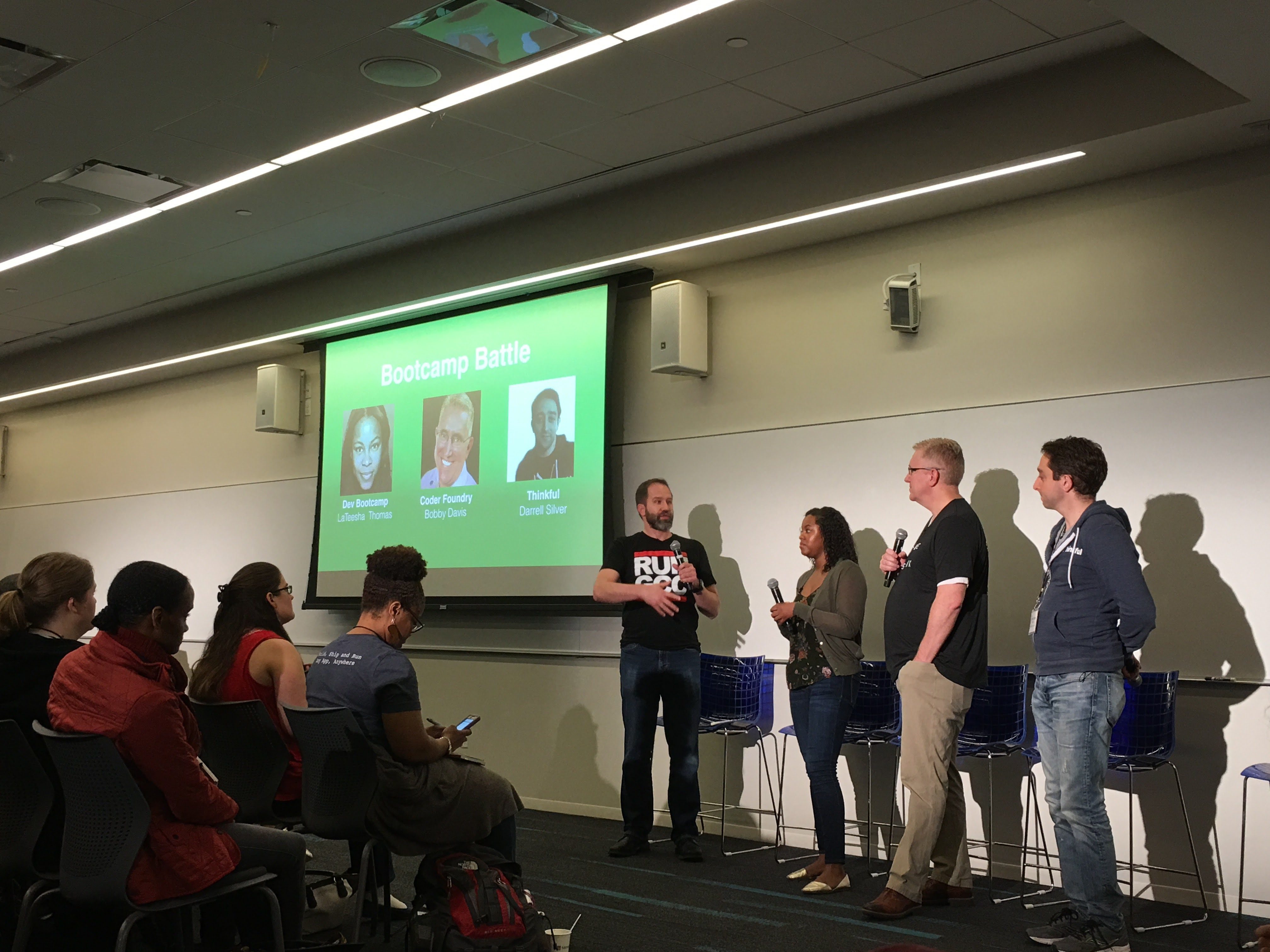When I was in my program, I loved reading other bootcamper’s blogs. Seeing their challenges, progress, their wins big and small… it got me through. One inevitable, disappointing and all too common phenomenon that I ran into again and again was that the student would be consistently blogging, then they’d graduate, look for a job…. and then the blog would just stop. Even worse, the posts might have stopped before graduation. I never knew what happened to the person, whether things worked out or not. I could be creepy and scour LinkedIn to see if the student became gainfully employed in web dev, but I never went that far.
Well, my last post was from December, so this blog is in dangerous territory of becoming yet another abandoned bootcamper blog.
So here’s a quick catchup. Plenty has changed since the end of 2016. The first few months of my apprenticeship were rough. Everything was so new, and I didn’t know how I was doing, so I was working double time to “catch up.” After I got some positive reinforcement and felt a little bit more comfortable with the development process, I stopped taking work home with me every night, and things improved. It was also a weird time because it was the holidays, and it was hard to get to know my new coworkers when everyone was out of town for the month.
Long story short, I survived my apprenticeship and was hired on full time as a software developer in mid April. It was a great relief, and a nice cap to the last few years of work. I changed my career! That’s nuts! One surprising aspect of my job is that I’m working 90% of the time in JavaScript, which seems like some cruel joke from the universe considering my personal feelings about JS, but it’s not too bad actually. JavaScript is less terrible when you know what you’re doing, I’ll give it that.
My progress on this journey has been capped by conferences. I went to my first programming conference (ForwardJS) while I was finishing my program in Spring 2016, and my second (RubyConf) just as I was starting my apprenticeship. Last month I attended Codeland. It was sponsored by the CodeNewbie podcast, which is a super supportive podcast for … you guessed it, programming newbies.

This was the first year of Codeland, so I didn’t know what to expect. This was definitely a gamble, especially since I was weighing going to Codeland vs hitting up RailsConf in Phoenix the next week.
Codeland turned out to be a really strong event, despite a few logistical hiccups. Most obviously it was a super diverse crowd in every sense – age/race/gender/experience. The vibe was really great, inclusive, positive and supportive, none of that weird aloof super nerd awkwardness/ competitiveness I’d seen at other conferences, no clique-ishness. Oh, and it was woke as fuck.
Content? The talks and workshops were strong and varied. I got to make a pizza ordering Slackbot in one workshop. Talks that I had no interest in turned out to be actually interesting and there were things that I could relate to, even if I hadn’t used such and such technology (and it’s a good thing too, since the conference was single track aside from the workshops!). The high quality of the content I’ve gathered is because the speakers worked with the conference staff quite extensively to hone their talks. A+, good job guys. Also, the food was divine. One quibble – no Codeland shirts? ; o


It was strange to be at a conference and be more experienced than some people I met. I got to talk to a lot of people about bootcamps and it felt good to share my experience. I’m a ‘success story’ I guess, although to be honest I don’t know if I would suggest a coding bootcamp for a person just starting out on the path. But that is a whole nother blog post…..

